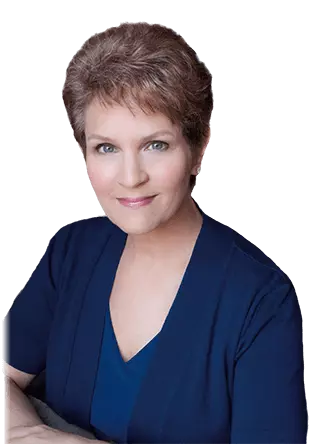What are the biggest challenges facing successful business people today? In my work as a certified executive coach for C-Suite Executives, Directors, Managers, and Entrepreneurs, there are many recurring themes that seem to surface. One at a time, I’ll be sharing with you 12 of those top challenges along with hints, tips, and steps you can take to avoid or eliminate altogether these key issues that might be holding you back from achieving the kind of success you are aiming for.
Challenge #5: “There just aren’t enough hours in the day to get everything done.”
Do you find yourself frequently falling behind in your tasks even though you work 12, 14, or even 16 hours a day? Do you find that at the end of the day, you still haven’t finished your to-do list? The truth is that learning how to manage your time can make or break your success as an executive.
Let’s face it: There are only 24 hours in a day. You can’t “make” more time unless you invent a time machine. (And if you figure that one out, I’d like to invest.) But even though you can’t create time, you can use your time more productively. The most successful executives do.
Here are a few steps to gain more control of the clock:
Recognize the value of your time.
Billionaire John Paul Getty was a serial cigar smoker until he realized one day that – based on what he would make hourly – he was spending the equivalent of $50,000 per year smoking. That wasn’t $50,000 worth of cigars; it was $50,000 worth of his time!
That sure brings home the phrase, “time is money,” doesn’t it? In fact, think about the words we use to talk about time. We spend it, waste it, and save it — just like money. If you thought of every minute of your day as being worth, say, $10, wouldn’t you look at that minute differently? Start to appreciate the true “value” of your time, and you will begin to spend your minutes more wisely, waste fewer of them, and save yourself a lot of time.
Log your time.
I ask my coaching clients to become more aware of how they spend their time by creating a log that’s laid out in 15-minute increments from the moment they wake up to the time they go to bed. You can do it in a table format, or you can create it in Excel. The key is to be methodical and disciplined about it, carrying the log around with you, and remembering to jot down what you are “truly” doing during each 15-minute segment of the day. Start on a Monday morning and do this for an entire week.
Here’s a sample log:
| From | To | Activity |
| 06:00 | 06:15 | Check emails from London office |
| 06:15 | 06:30 | Go for a swim |
| 06:30 | 06:45 | Get ready for work |
| etc. | ||
| 21:30 | 21:45 | Read finance report |
| 21:45 | 22:00 | Put kids to bed |
Once you’ve created a log for an entire week, sit down with several different colors of highlighters, and assign a color to each key part of your life. For example, you might use one color for family time, another for client work, and other colors for time spent on administrative work, personal quiet time, staff development — whatever are the key activities. Then, go through your log, highlighting each 15-minute segment with the appropriate color.
At the end, you will have a clear “color-coded image” of how you spend your time. Which areas of your life and activities received the most attention? As you review the logs, ask yourself these questions:
- What is your biggest “ah-ha” as a result of tracking your time?
- What pleases you most when you look at how you spend your time?
- What poor time management habits did you uncover?
- Of the colors you wanted to see the most (e.g., client time, family time, etc.), what prevented you from spending time in these key areas?
- Now that you see where you truly spend your time, what’s the #1 thing you want to change?
Review Non-Value-Added Activities.
Many executives discover they spend as much as 40% of their days on non-value-added activities like e-mail management or unimportant phone calls. If that’s you, too, try these strategies:
- Set priorities, and guard them ruthlessly. When someone asks you to help them with something, ask yourself, “If I do this, will it take time away from my key priorities for the day?” If so, ask if you can help later.
- Understand your biorhythms. Notice when you have energy slumps during the day and plan to work on your top priorities when you have the most energy.
- Delegate, delegate, delegate. Most of my clients find they can delegate most administrative tasks to other employees.
- Plan dedicated focus time. Give yourself specific time guidelines for e-mail management and/or other tasks, and stick to it. Let your staff know that you will work on e-mail between, say, 8:30- 9:00 a.m. every morning or that you will close your door and work without interruption from 2:00-4:00 p.m. daily.
- Get voice-activated software, and dictate your e-mails. My productivity virtually doubles when I dictate into my computer rather than type my e-mails.
- Install a big clock on your wall. Time can slip right by if you don’t stay aware of how much passes while working on a task.
- Be ruthless about meetings. Ask to see an agenda ahead of time to make sure you truly need to attend a meeting. If your staff is wasting time in meetings, remove chairs from meeting rooms. If people have to stand, I guarantee meetings will be short, sweet, and productive!
- At the end of each day, write down your top three priorities for the next day. When you arrive in the morning, do nothing else until you have accomplished your #1 task. You will start the day with a sense of accomplishment which will drive you to finish your other priorities.
- Make use of idle time. One of my clients set up a regular weekly meeting with his boss in the U.S. during his 20 minutes car ride to the office every Thursday morning. How can you use time when you’re waiting somewhere or stuck in Bangkok traffic?
Good time management skills can really save you time and money – why not start your “savings plan” today?

LEADING YOU™
The most important driver of overall success is your own self-leadership. How you lead yourself directly impacts your ability to lead others, and that, in turn, can prevent you from reaching your full potential.
Discover the power of SELF-LEADERSHIP to build your executive brand and drive career success.

 Brenda Bence is sought after across six continents as a Certified Executive Leadership Coach, internationally recognized branding expert, and the author of 11 award-winning books on leadership, coaching, and branding. A Global Certified Speaking Professional, Brenda is in demand as a top-rated motivational speaker, engaging audiences around the world, both in-person and virtually.
Brenda Bence is sought after across six continents as a Certified Executive Leadership Coach, internationally recognized branding expert, and the author of 11 award-winning books on leadership, coaching, and branding. A Global Certified Speaking Professional, Brenda is in demand as a top-rated motivational speaker, engaging audiences around the world, both in-person and virtually.